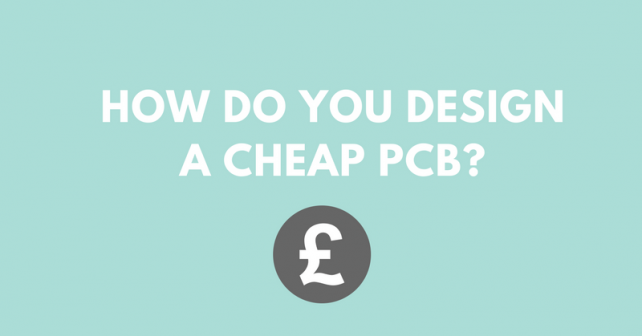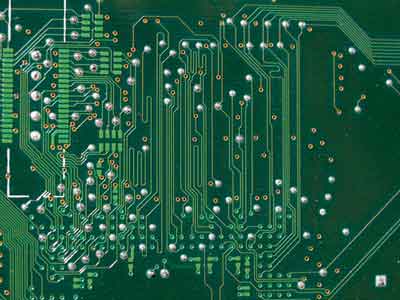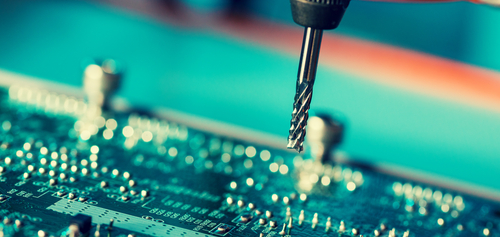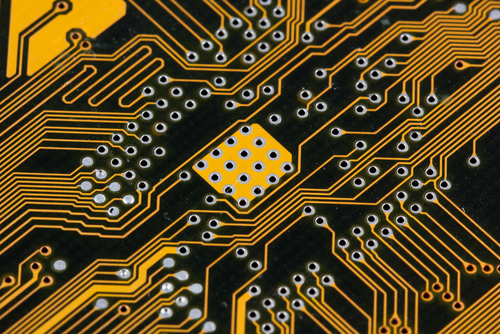
Designing a PCB with all the things you need to make it work properly is a great learning experience. From time to time however it can cost a lot more than you expected once you’ve got your quote from your chosen manufacturer. The majority of the time you can actually reduce the cost of your PCB by optimising the design without changing the functionality your finished product. This means you get the same performance at lower cost. In this blog post we’ll go over some of the more common design choices that can inflate your costs. It is important however to note that you must ensure your PCB will be able to operate as intended. If you’re after some more general tips to help with the design and fabrication then please check out our PCB technical advice.
What you’ll learn:
- How to cut out unnecessary costly elements of your design
- How to design effectively for your intended use of your circuit board
- What causes the costs to rise when designing a PCB
Use the minimum amount of layers in your PCB design
If careful placement and routing is done, you can minimize the amount of copper layers you need. Use the fewest layers possible without comprising the quality or function and you’ll be able to save money when designing your PCB. The table below shows how the price changes in relation to the amount of layers.
| Number of layers | Increase in PCB price | |
|---|---|---|
| 1 | -25% | |
| 2 | 0% | |
| 4 | +60% | |
| 6 | +110% | |
| 8 | +240% | |
| 12 | +350% |
The minimum surface area
The bigger the dimensions or surface area, the higher the cost. If the component placing and routing is considered carefully, you can take advantage of all the space possible and keep space to a minimum. Whatever the shape of your PCB, it will be the rectangular box that encompasses your shape that you pay for. So to maximise the area you get for your buck, make your PCB rectangular.
Copper thickness and its effect on PCB price
PCBs come in various copper weights or thicknesses. At PCB Train we express this in millimetres (mm) but copper (known as Cu) can be measured in:
- mils (mil) meaning one thousandths of an inch, so 1000 mil = 1 inch
- millimetres (mm), 1 mm equals a 1000 microns (um)
- inches (inch), 1 inch equals 25.4mm
- ounces (oz), 1oz weight of copper = 35 microns of copper thickness
- keep in your head that 4 thou = 0.1 mm = 100 um
| Oz | inch | mil | mm | um | ≈ um | Increase in PCB price in % |
|---|---|---|---|---|---|---|
| 0.5 | 0.000685 | 0.685 | 0.017399 | 17.399 | 17 | 0% |
| 1 | 0.00137 | 1.37 | 0.034798 | 34.798 | 35 | 0% |
| 2 | 0.00274 | 2.74 | 0.069596 | 69.596 | 70 | +10% |
| 3 | 0.00411 | 4.11 | 0.104394 | 104.394 | 105 | +20% |
How to set minimum clearance/spacing?
The track width and spacing of your design can greatly affect the cost of your PCB. For this reason you should choose dimensions that enable you to finish your layout comfortably. The closer the spacing the higher the cost of your PCB design when it comes to manufacture.
| Minimum Track Width/Spacing | The increase in PCB Price in % |
|---|---|
| >4/4 mil | 0% |
| =4/4 mil | +10% |
| =3/3 mil | three times higher |
Set all via and pad holes to be the same size
The majority of different PCB manufacturers prices change depending on how many different via and pad hole sizes are present in your design. This means that if you’re using a 0.15mm hole size and a 0.2mm size on the same board, this will likely incur additional costs. If all holes were set to 0.15mm there would often be a lower cost.
Consider single orders for your board as prototypes
Depending on how many PCBs you need, you could order your boards as prototypes. This is an easy way to keep costs low as there will likely be a lot of restrictions on your design already, as the manufacturing process will involve a large amount of other boards as well as your own. There also might be a benefit in terms of lead time. At PCB Train for example, we offer an exclusive 1 day turnaround service which we call our express service where we can get your circuit boards to you the next day if you’re within the UK, where we can ship for next day delivery.
Minimise overall board size
Keep in mind whilst designing your board that the overall board size will lead to increased costs. Make your board as small as possible whilst still functioning.
Colour is an extra
Green is the industry standard for solder mask colour. All the PCB production processes are set up and optimised for a green solder resist and white legend. If you wish to make your board unique by changing its colour, make sure it needs to be as this will result in additional costs.
Don’t go for irregular shapes
If you don’t go for a square or a rectangle for your PCB, be aware that other shapes will cost more from many other manufacturers. At PCB Train, we do not charge extra for irregular shapes.
Look into panelizing your own layout
PCBs should be delivered as a panel if prepared for mass production. That is, they will be nested inside a handling frame which fits the pick and place assembly machines. If you’re able to do this yourself you can save setup costs from the panelisation. If you use PCB train, we do not charge for panelisation if you use our free optional panelisation service.
Via types
Out of the 3 possible types of vias, there are price differences depending on your choice. Blind and buried vias are intended to be used for high density and complex high frequency boards. If your design is simple, and 99% of PCBs manufactured are simple, design using regular through hole vias, and don’t try to use blind and buried as they will be much more expensive, adding a minimum of + 30% to the PCB cost.
Time is money
Additional costs to manufacture or assembly your PCB will accrue if you require a fast delivery time. To keep costs down, allow as long a lead time as you can. At PCB Train we show all the costs of faster deliveries when you get a quote online so you can make an informed choice right away.
In summary, keep your design as standard as possible whilst still working as intended. This is the best way to keep your PCB manufacturing costs down. There is no quick fix that applies to all PCB designs, you just have to look at your own in the context of the above points. If you need further assistance about more technical elements, check out our things to consider when designing and laying out a PCB article.







Leave a Reply